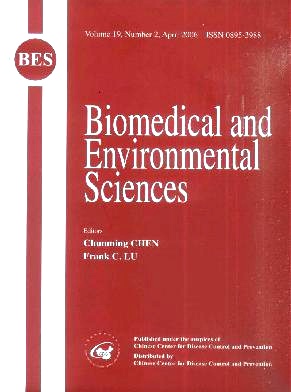Acute Toxicity and Cardio-Respiratory Effects of 2-Deoxy-D-Glucose: A Promising Radio Sensitiser
-
Key words:
- 2-deoxy-D-glucose /
- Glucose analogue /
- Radio sensitizer /
- Acute toxicity /
- Blood pressure /
- Heart rate /
- Respiration
Abstract: To evaluate the acute toxicity of 2-deoxy-D-glucose (2DG) by oral (p.o.) and intravenous (i.v.) routes, and also the cardio-respiratory effects following high doses of 2DG in animal models. Methods The LD50 of 2DG (in water)was determined in rats and mice by p.o. route and in mice by i.v. route. The effect of 2-DG (250 mg/kg, 500 mg/kg, and 1000mg/kg, i.v.) was studied on various cardio-respiratory parameters viz., mean arterial blood pressure, heart rate and respiratory rate in anaesthetised rats. The effect of 2DG (500 mg/kg, 1000 mg/kg, and 2000 mg/kg, p.o.) was also studied on various respiratory parameters viz., respiratory rate and tidal volume in conscious rats and mice using a computer program. Results The p.o. LD50 of 2DG was found to be >8000 mg/kg in mice and rats, and at this dose no death was observed. The LD50 in mice by i.v. route was found to be 8000 mg/kg. At this dose 2 out of 4 mice died and the death occurred within 6 h. A significant increase in the body weight was observed after p.o. administration of 2DG in rats at 500 mg/kg, 1000 mg/kg, and 2000 mg/kg doses. There was no significant change in the body weight at 4000 mg/kg and 8000 mg/kg by the p.o. route in rats and up to 8000 mg/kg by p.o. as well as i.v. routes in mice. Intravenous administration of 2DG (250 mg/kg, 500 mg/kg, and 1000 mg/kg)in anaesthetised rats showed a time-dependent decrease in the mean arterial blood pressure. There was no change in the heart rate in any of the treatment groups. The tidal volume was not changed significantly by p.o administration in conscious rats, but a significant decrease in the respiratory frequency at 500 mg/kg and 1000 mg/kg doses was observed. In the mice also there was no change in the tidal volume after p.o, administration, but the respiratory frequency decreased significantly at 2000 mg/kg dose.Conclusion 2DG is a safe compound but can cause a fall in the blood pressure and a decrease in respiratory frequency at high doses.
| Citation: | R. VIJAYARAGHAVAN, DEO KUMAR, SN DUBE, R. SINGH, KS. PANDEY, BC. BAG, MP. KAUSHIK, K. SEKHAR, BS. DWARAKANATH, T. RAVINDRANATH. Acute Toxicity and Cardio-Respiratory Effects of 2-Deoxy-D-Glucose: A Promising Radio Sensitiser[J]. Biomedical and Environmental Sciences, 2006, 19(2): 96-103. |







 Quick Links
Quick Links
 DownLoad:
DownLoad: